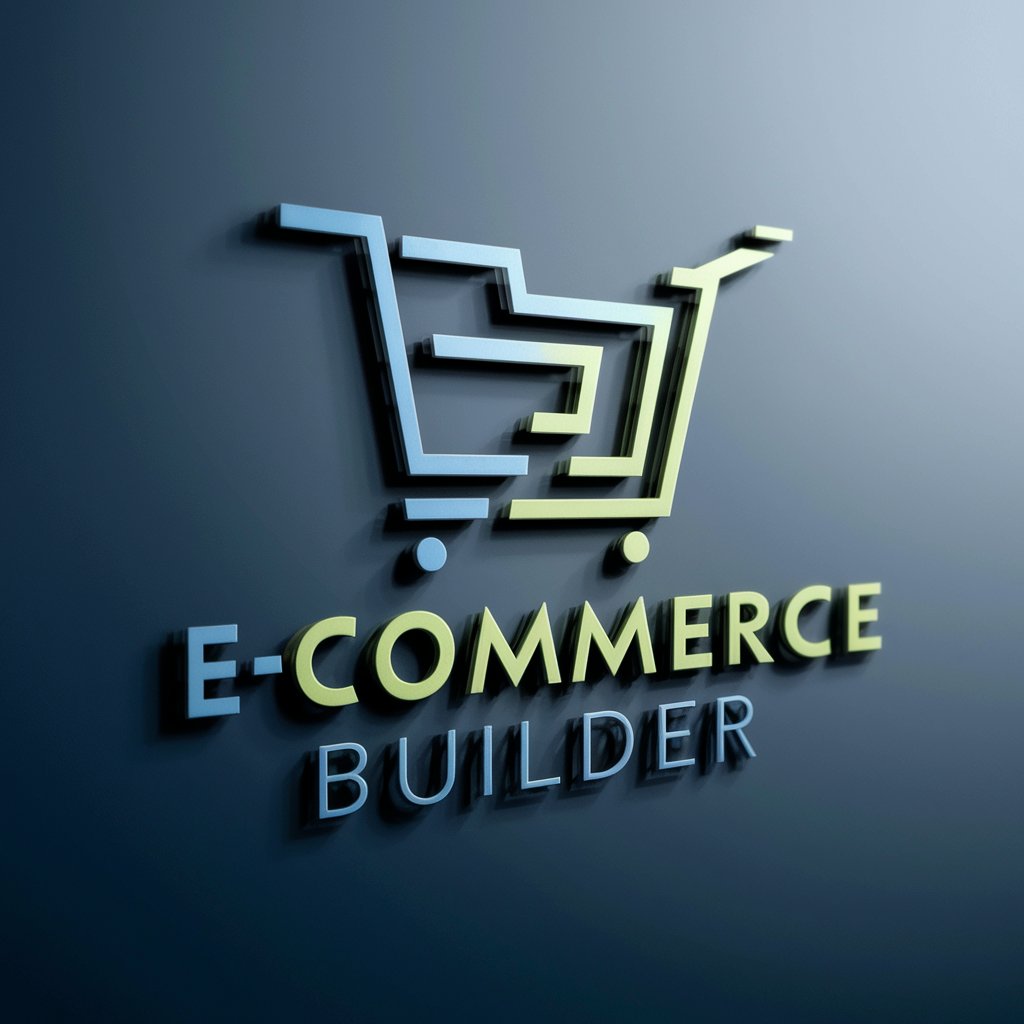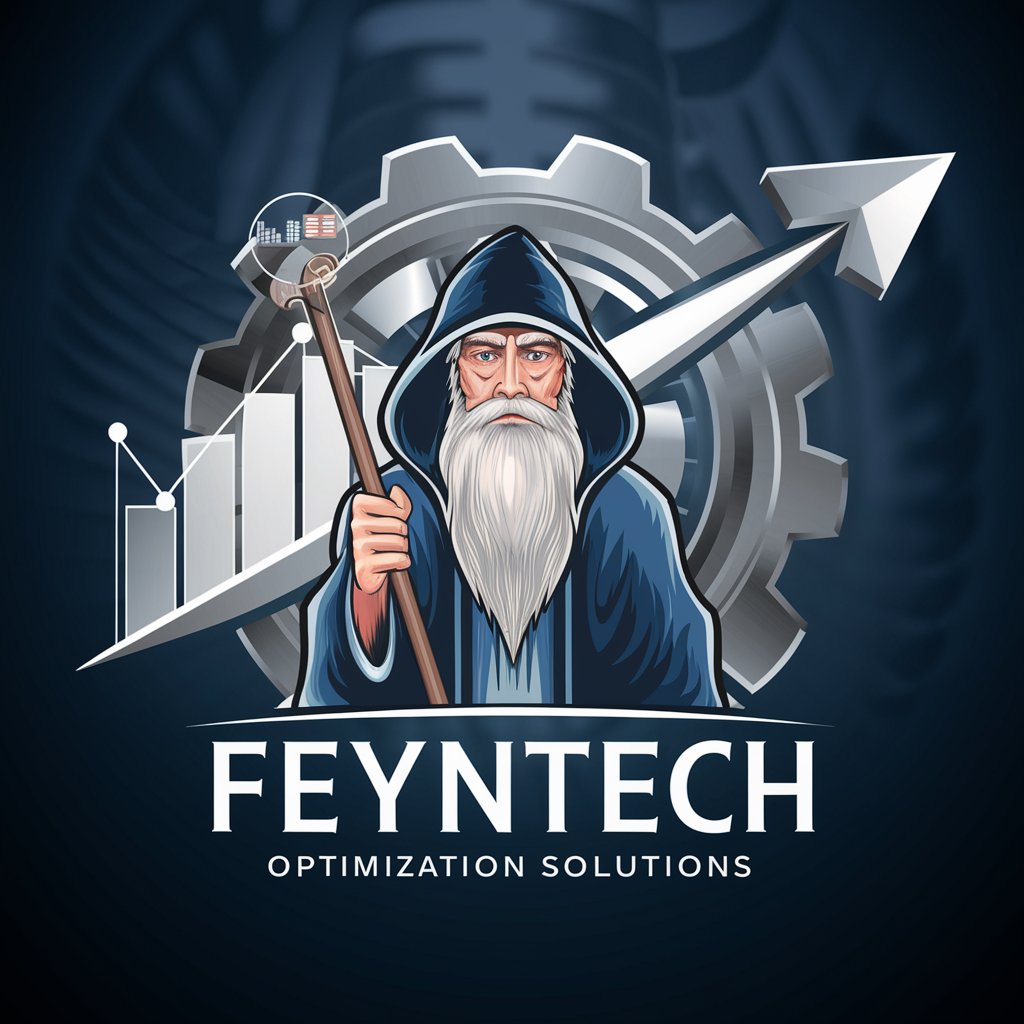
Ecomerce Assistant - E-Commerce Expertise

Welcome! Ready to build your e-commerce success?
Empower your store with AI-driven advice
How do I choose the best e-commerce platform for my new store?
What are effective marketing strategies for an online business?
Can you guide me through setting up a payment processing system?
What are some tips for managing inventory in an e-commerce store?
Get Embed Code
Introduction to E-Commerce Assistant
E-Commerce Assistant is designed as a comprehensive tool for entrepreneurs venturing into or expanding within the e-commerce sector. It functions as an all-encompassing guide for establishing, managing, and scaling online stores. This GPT's capabilities range from providing advice on choosing the right e-commerce platforms to devising marketing strategies, inventory management, website design, payment processing, and enhancing customer service. It also covers crucial legal and financial considerations, offering insights into business management, financial planning, customer relationship management (CRM), and operational efficiency. By integrating these functions, E-Commerce Assistant aims to streamline the process of running an e-commerce business, making it more accessible and efficient for entrepreneurs. Powered by ChatGPT-4o。

Main Functions of E-Commerce Assistant
Platform Selection Guidance
Example
Comparing Shopify, WooCommerce, and Magento based on a user's specific business needs and technical capabilities.
Scenario
A user planning to launch an online fashion store inquires about the best platform. E-Commerce Assistant evaluates their requirements, including budget, expected traffic, and customization needs, to recommend the most suitable platform.
Marketing Strategy Development
Example
Creating a comprehensive digital marketing plan that includes SEO, social media marketing, and email campaigns.
Scenario
A user seeks to increase their online store's visibility and sales. E-Commerce Assistant suggests a multi-channel marketing strategy, focusing on optimizing for search engines, engaging with customers on social media, and building an email subscriber list for direct marketing.
Inventory Management Advice
Example
Implementing just-in-time (JIT) inventory systems to reduce storage costs and minimize stockouts.
Scenario
A user struggles with overstocking and understocking issues. E-Commerce Assistant advises on setting up a JIT inventory system, leveraging real-time data to optimize stock levels and improve cash flow.
Website Design and Usability Tips
Example
Guidelines for creating user-friendly website layouts, optimizing loading times, and ensuring mobile responsiveness.
Scenario
A user wants to revamp their online store's website to improve user experience. E-Commerce Assistant provides detailed recommendations on design elements, site structure, and mobile optimization to enhance usability and customer satisfaction.
Legal and Financial Planning
Example
Navigating the complexities of e-commerce regulations, tax obligations, and setting up a sound financial system.
Scenario
A user is unsure about the legal requirements and financial setup for their new e-commerce venture. E-Commerce Assistant outlines essential legal compliances, tax considerations, and advises on establishing robust financial planning and management practices.
Ideal Users of E-Commerce Assistant
New Entrepreneurs
Individuals looking to enter the e-commerce sector with little to no experience. They benefit from comprehensive guidance on starting and running an online business, avoiding common pitfalls, and leveraging best practices for success.
Existing E-Commerce Businesses
Owners of existing online stores seeking to optimize operations, expand their market reach, or overcome specific challenges. They can utilize the assistant's expertise to refine their strategies, enhance customer experience, and improve overall business performance.
Digital Marketing Professionals
Marketing experts focusing on the e-commerce space, looking for innovative strategies and tools to drive sales and engagement. The assistant offers insights into the latest trends, techniques, and analytics tools to craft effective marketing campaigns.

How to Use E-Commerce Assistant
Step 1
Start by visiting yeschat.ai for a free trial, no ChatGPT Plus required or account creation necessary.
Step 2
Identify your e-commerce needs or challenges, whether you're setting up a new store, seeking marketing advice, or looking for inventory management solutions.
Step 3
Interact with the E-Commerce Assistant by asking specific questions related to your e-commerce project or use predefined queries to explore its capabilities.
Step 4
Apply the provided guidance, strategies, and solutions directly to your online store, from platform selection to customer service enhancement.
Step 5
Regularly consult the E-Commerce Assistant for ongoing support and updates on the latest e-commerce trends and best practices.
Try other advanced and practical GPTs
Supreme Intellect
Elevating Intellect with AI

🛑 Mr. Whats App!! 👽
Enhance WhatsApp, Empower Business

Charisma Coach (Science-Based Tips and Strategies)
Elevate Your Charisma with AI

Feyntech Optimization GPT
Optimizing Operations with AI Insight

Job Application Wizard
Craft winning applications with AI-powered precision.

Mix Master GPT
Elevate Your Tracks with AI

Obsidian AI Assistant
Empower Your Notes with AI

Kitchen Mentor | Personal Chef
Tailored Dining, AI-Powered Convenience

Eunwoo's dad's daily Bible
Tailored Bible Guidance for Everyday Life

PRD Assistant
Streamlining Product Planning with AI

Thought Scholar
Illuminate Your Thoughts with AI-Powered Philosophy

Exhibition Designer
Designing Trade Show Booths, Powered by AI

Frequently Asked Questions about E-Commerce Assistant
What e-commerce platforms can E-Commerce Assistant help me with?
E-Commerce Assistant offers guidance on a wide range of platforms, including Shopify, WooCommerce, Magento, and BigCommerce, among others, providing insights on choosing the best platform based on your business needs.
Can it provide marketing strategy advice?
Yes, it can provide comprehensive marketing strategy advice, including SEO, social media marketing, email campaigns, and content marketing to drive traffic and increase sales.
How can E-Commerce Assistant help with inventory management?
It provides solutions for inventory management by recommending tools and strategies for efficient stock tracking, order fulfillment, and minimizing overstock or stockouts.
Is it capable of advising on legal and financial aspects?
Absolutely, it covers the legal and financial aspects of running an e-commerce business, offering advice on taxes, compliance, business structuring, and financial planning.
Can E-Commerce Assistant assist with website design?
Yes, it provides insights on creating user-friendly and aesthetically pleasing e-commerce websites, including layout design, user experience (UX) best practices, and mobile optimization.